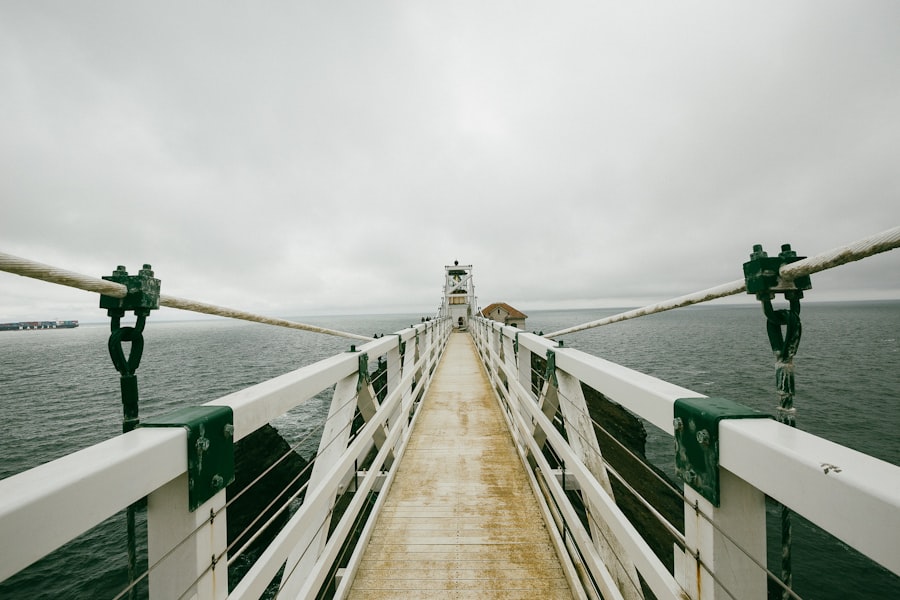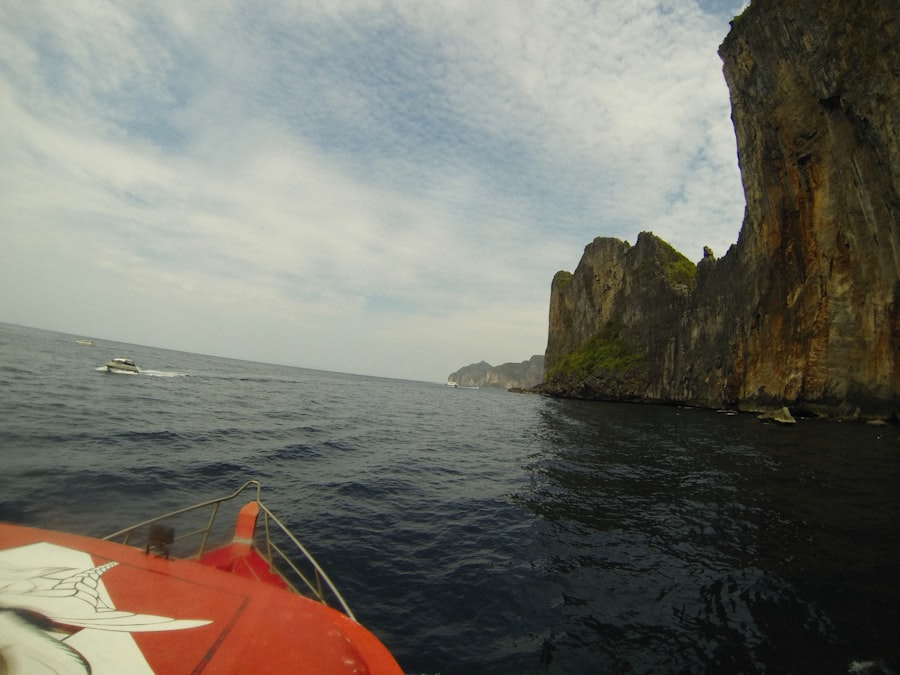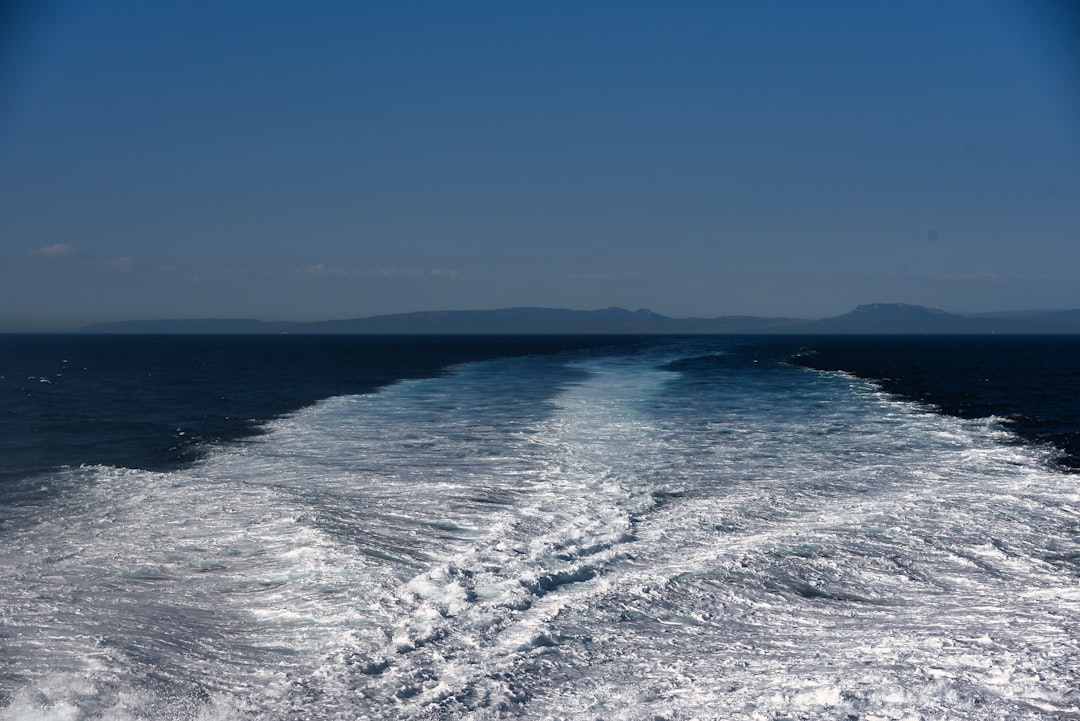The Drake Passage, a body of water that separates South America from Antarctica, is renowned for its tumultuous seas and unpredictable weather. Stretching approximately 600 miles, this narrow strait is often regarded as one of the most challenging maritime routes in the world. The confluence of the Atlantic and Pacific Oceans creates a unique environment where powerful currents and fierce winds converge, resulting in rough seas that can test even the most seasoned sailors.
The passage is not only a geographical landmark but also a significant barrier for those seeking to explore the icy realms of Antarctica. Navigating the Drake Passage requires skill, experience, and a healthy respect for nature’s might. The waters are notorious for their swells, which can reach heights of over 30 feet during storms.
However, for adventurers and researchers alike, the Drake Passage represents both a challenge and an opportunity—a gateway to one of the most pristine environments on Earth. Those who dare to traverse these waters often find themselves in awe of the raw power of nature, making the journey as much about personal growth as it is about reaching a destination.
Key Takeaways
- The Drake Passage is a challenging waterway known for its rough seas and strong winds, making it a thrilling but potentially difficult crossing.
- Crossing the Drake Passage has a rich history dating back to the age of exploration, with tales of daring voyages and famous explorers braving the treacherous waters.
- Wildlife encounters in the Drake Passage are a highlight of the journey, with opportunities to see various species of seabirds, whales, and other marine life.
- The best time to cross the Drake Passage is during the austral summer, from November to March, when the weather is relatively milder and the seas are calmer.
- Tips for surviving the Drake Passage include being prepared for rough conditions, taking seasickness medication, and dressing warmly for the cold and windy weather.
The History of Crossing the Drake Passage
The history of crossing the Drake Passage is steeped in tales of exploration and adventure. Early navigators faced immense challenges as they sought to chart these treacherous waters. In the 16th century, explorers like Sir Francis Drake, after whom the passage is named, ventured into these uncharted territories in search of new trade routes and territories.
Their journeys were fraught with peril, as they battled not only the elements but also the unknown dangers lurking beneath the waves. These early expeditions laid the groundwork for future exploration and established the Drake Passage as a critical route for maritime navigation. As time progressed, the passage became increasingly significant for scientific research and exploration.
The 19th century saw a surge in interest in Antarctica, with explorers such as Ernest Shackleton and Robert Falcon Scott making their way across the Drake Passage to study the continent’s unique ecosystems.
The legacy of these early explorers continues to inspire modern adventurers who seek to follow in their footsteps, navigating the same waters that once challenged their predecessors.
Wildlife Encounters in the Drake Passage

The Drake Passage is not only a formidable waterway but also a vibrant ecosystem teeming with wildlife. As vessels traverse these waters, they often encounter an array of marine life that calls this region home. From playful dolphins to majestic whales, the passage serves as a migratory route for numerous species.
The sight of humpback whales breaching the surface or orcas gliding gracefully through the waves is a breathtaking experience that leaves an indelible mark on those fortunate enough to witness it. Birdwatchers also find delight in the avian population that inhabits the Drake Passage. Albatrosses, petrels, and other seabirds soar above the waves, riding the wind currents with remarkable grace.
These birds are not only a testament to the region’s biodiversity but also play a crucial role in maintaining the ecological balance of the area. For many travelers, these wildlife encounters become one of the highlights of their journey, offering a glimpse into the untamed beauty of nature that thrives in this remote part of the world.
The Best Time to Cross the Drake Passage
| Month | Sea Conditions | Weather | Wildlife Sightings |
|---|---|---|---|
| November | Rough | Unpredictable | Possible |
| December | Rough | Unpredictable | Possible |
| January | Rough | Unpredictable | Possible |
| February | Varies | Unpredictable | Likely |
| March | Varies | Unpredictable | Likely |
| April | Varies | Unpredictable | Likely |
Timing is crucial when planning a crossing of the Drake Passage. The weather can be notoriously unpredictable, with conditions varying dramatically from one moment to the next. Generally, the best time to embark on this journey is during the austral summer months, from late November to early March.
During this period, temperatures are milder, and sea conditions tend to be more favorable for navigation. Travelers can expect calmer waters and clearer skies, making for a more pleasant crossing experience. However, even during these months, it is essential to remain vigilant and prepared for sudden changes in weather.
Storms can arise unexpectedly, and conditions can shift rapidly. Those planning to cross should stay informed about weather forecasts and be ready for any eventuality. While summer offers better chances for smooth sailing, it is important to remember that nature remains unpredictable, and adventurers must be equipped to handle whatever challenges may arise during their journey.
Tips for Surviving the Drake Passage
Surviving a crossing of the Drake Passage requires careful preparation and a proactive mindset. First and foremost, travelers should ensure they are equipped with appropriate gear to withstand cold temperatures and potential wet conditions. Layering clothing is essential, as it allows individuals to adjust their attire based on changing weather conditions.
Waterproof jackets, thermal layers, and sturdy footwear are all vital components of a well-thought-out packing list. In addition to physical preparation, mental readiness plays a significant role in navigating the challenges of the Drake Passage. Travelers should be aware that seasickness can affect even those with strong constitutions.
It is advisable to bring along seasickness medication or natural remedies to alleviate discomfort during rough patches. Staying hydrated and nourished is equally important; consuming light meals can help maintain energy levels while minimizing nausea. By taking these precautions, adventurers can enhance their chances of enjoying a successful crossing.
The Beauty of the Drake Passage

Despite its reputation for rough seas, the Drake Passage possesses an undeniable beauty that captivates those who venture through its waters. The ever-changing landscape is marked by dramatic skies that shift from brilliant blues to ominous grays, creating a stunning backdrop for any journey. As vessels navigate through this strait, travelers are treated to breathtaking views of icebergs floating serenely on the water’s surface and rugged coastlines that hint at the wildness of Antarctica beyond.
The interplay between light and water adds an ethereal quality to the experience. Sunrises and sunsets over the Drake Passage can be nothing short of magical, casting vibrant hues across the horizon and illuminating the waves below. For many travelers, these moments become cherished memories—reminders of nature’s grandeur and its ability to inspire awe even in challenging circumstances.
The beauty of the Drake Passage lies not only in its physical attributes but also in its capacity to evoke deep emotions and reflections on one’s place within the natural world.
The Thrill of Crossing the Drake Passage
For adventurers seeking excitement and challenge, crossing the Drake Passage offers an unparalleled thrill. The anticipation builds as travelers prepare to embark on their journey through these storied waters, where every wave holds a promise of adventure. The sensation of being at sea—feeling the vessel rise and fall with each swell—creates an exhilarating atmosphere that few experiences can match.
It is a rite of passage for many who dream of exploring Antarctica. The camaraderie among fellow travelers adds to the thrill of crossing this formidable waterway. Shared stories and laughter help forge connections as individuals bond over their mutual excitement and apprehension about what lies ahead.
Whether it’s navigating rough seas or marveling at wildlife sightings together, these shared experiences create lasting memories that extend beyond the journey itself. For many, crossing the Drake Passage becomes not just a physical challenge but also an emotional journey filled with personal growth and newfound friendships.
Exploring the Antarctic Peninsula after Crossing the Drake Passage
Upon successfully crossing the Drake Passage, travelers are rewarded with access to one of Earth’s last great frontiers: the Antarctic Peninsula. This stunning region boasts breathtaking landscapes characterized by towering glaciers, dramatic ice formations, and an array of wildlife that thrives in its harsh environment. Explorers often find themselves captivated by the stark beauty surrounding them as they set foot on this remote landmass.
The opportunities for exploration are vast once travelers reach the Antarctic Peninsula. Kayaking among icebergs, hiking on snow-covered trails, or simply observing seals lounging on ice floes are just a few activities that await adventurers in this pristine wilderness. Each moment spent in Antarctica serves as a reminder of nature’s power and fragility—a chance to witness firsthand how life endures in one of Earth’s most extreme environments.
The Unique Experience of Sailing the Drake Passage
Sailing through the Drake Passage is an experience unlike any other—a blend of adventure, challenge, and awe-inspiring beauty that leaves an indelible mark on those who undertake it. The journey itself becomes a rite of passage for many travelers; it is not merely about reaching Antarctica but embracing every moment spent at sea. Each wave tells a story, each gust of wind carries whispers from distant lands—creating an atmosphere rich with history and possibility.
The unique experience of sailing this waterway fosters a deep connection between travelers and nature. As they navigate through turbulent waters surrounded by breathtaking vistas, individuals often find themselves reflecting on their own lives and aspirations. The vastness of the ocean serves as both a humbling reminder of humanity’s place within nature and an invitation to explore one’s own limits—both physically and mentally.
For many adventurers, crossing the Drake Passage becomes more than just a journey; it transforms into an exploration of self-discovery amidst nature’s grandeur.
The Importance of the Drake Passage in Antarctic Exploration
The significance of the Drake Passage extends far beyond its challenging waters; it has played a pivotal role in Antarctic exploration throughout history. As explorers sought to uncover the mysteries of this frozen continent, they relied on this waterway as a crucial route for accessing remote regions rich with scientific potential. The passage has facilitated countless expeditions aimed at understanding climate change, studying unique ecosystems, and documenting wildlife behavior—contributing invaluable knowledge to our understanding of Earth’s southernmost continent.
Moreover, modern research initiatives continue to emphasize the importance of crossing the Drake Passage for scientific endeavors today. As climate change impacts polar regions more dramatically than elsewhere on Earth, researchers recognize that studying Antarctica’s ecosystems is vital for understanding global environmental shifts. The passage remains an essential conduit for scientists seeking to gather data that informs conservation efforts and policy decisions aimed at protecting fragile ecosystems worldwide.
The Future of Crossing the Drake Passage
Looking ahead, crossing the Drake Passage will likely continue to evolve as advancements in technology reshape maritime travel and exploration practices. Innovations in ship design may lead to vessels better equipped to handle rough seas while ensuring passenger comfort during crossings—a welcome development for those who may be apprehensive about navigating these challenging waters. Additionally, increased awareness surrounding environmental conservation will influence how future crossings are conducted.
Sustainable tourism practices will become paramount as travelers seek meaningful experiences without compromising fragile ecosystems or wildlife habitats along their journeys through this remarkable region. As interest in Antarctic exploration grows among adventurers worldwide, it will be essential to balance accessibility with responsible stewardship—ensuring that future generations can continue to experience all that crossing the Drake Passage has to offer while preserving its natural beauty for years to come. In conclusion, crossing the Drake Passage represents both a formidable challenge and an extraordinary opportunity for adventure seekers and researchers alike.
Its rich history intertwined with tales of exploration serves as a testament to humanity’s enduring spirit in pursuit of discovery amidst nature’s grandeur. As travelers navigate these tumultuous waters toward Antarctica’s pristine landscapes filled with wildlife encounters and breathtaking beauty—the experience becomes not just about reaching a destination but embracing every moment spent at sea along this iconic waterway.
The Drake Passage Crossing is a renowned maritime route that connects the Atlantic and Pacific Oceans between the southern tip of South America and Antarctica. Known for its challenging conditions, the passage is a rite of passage for adventurers and explorers seeking to experience the raw power of the Southern Ocean. For those interested in learning more about the geographical significance and the adventurous spirit of such explorations, you might find this related article insightful. It delves into the intricacies of navigating this formidable stretch of water and the unique experiences it offers to those daring enough to undertake the journey.
WATCH NOW! Drake Passage: Earth’s Deadliest Waters Revealed
FAQs
What is the Drake Passage crossing?
The Drake Passage crossing refers to the journey across the body of water between the southern tip of South America and the northern tip of the Antarctic Peninsula. It is known for its rough seas and challenging sailing conditions.
Why is the Drake Passage crossing significant?
The Drake Passage crossing is significant because it is the shortest route from South America to Antarctica. It is also a critical part of global ocean circulation, connecting the Atlantic and Pacific Oceans to the Southern Ocean.
What are the challenges of the Drake Passage crossing?
The Drake Passage is known for its notoriously rough seas and unpredictable weather conditions. The area is also prone to strong winds and large waves, making it a challenging crossing for ships and sailors.
How long does the Drake Passage crossing take?
The duration of the Drake Passage crossing can vary depending on the weather and sea conditions. It typically takes around 2-3 days to cross the passage by ship.
What is the best time to cross the Drake Passage?
The best time to cross the Drake Passage is during the austral summer (November to March) when the weather and sea conditions are relatively milder. However, even during this time, the crossing can still be challenging.
